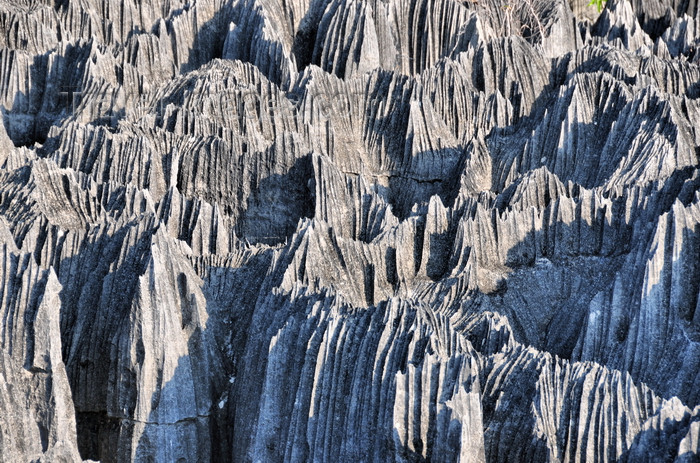Ex-Travel-Ganzer, iam gonna asking you to visit the beautifull and fantastic limestone rock formation in the world, feel new experience about this new place, climbing the rock formation. Its just beautifull and very beautifull and will always beautifull every time you see it. And the most important things, you only can see this place in one place and Madagascar is the bect place to watch it. Iam sure.
Tsingy de Bemaraha Strict Nature Reserve is a nature reserve of fantastic rock formations in Madagascar that today has been made a World Heritage Site. Located in west central Madagascar, about 60-80 km from the coast, it today comprises the strict nature reserve, which covers 853 sq km (329 sq mi) and the Tsingy de Bemaraha National Park, which covers 666 sq km (257 sq mi).
Tsingy de Bemaraha Strict Nature Reserve is a nature reserve located close to the western coast of Madagascar at 18°40′S 44°45′E / 18.667°S 44.75°E.
the area was first established as a strict nature reserve on 31 December 1927, and is now protected under Decree No. 66-242 of 1 June 1966. The ancient cemeteries within the Manambolo Gorge, the gorge itself, and the "forêt et rochers" (which includes the reserve), are all designated "natural monuments and sites" under a decree of 25 August 1937, all three being listed by an 'arrêté' of 11 February 1939. However, this latter designation does not imply any degree of management or protection. Inscribed on the World Heritage List in 1990. Since that time the southern end of the protected area has been changed into a national park covering 666 square kilometres (257 sq mi).
Tsingy de Bemaraha Reserve is located in the drier eastern side of Madagascar and supports a quite distinct fauna and flora in a dramatic karst landscape. The limestone plateau has been carved into an impressive forest of pinnacles (tsingys) and caves, with deep gorges filled with forest. The undisturbed forests are the habitat of many rare and endangered species with highly restricted ranges including lemurs, chamealeons, and other taxa.
Tsingy de Bemaraha Strict Nature Reserve comprises karstic landscapes and limestone uplands cut into impressive ‘tsingy’ peaks and a ‘forest’ of limestone needles, the spectacular canyon of the Manambolo river, rolling hills and high peaks.
Much of the reserve integral to Tsingy de Bemaraha comprises limestone karst, delimited to the east by abrupt cliffs which rise some 300-400 m above the Hanambolo River valley and extend several tens of kilometres from north to south. The western slopes rise more gently, and the whole western region of the reserve forms a plateau with rounded hillocks which slope away to the west. To the north undulating hills alternate with limestone extrusions, whereas in the south extensive pinnacle formations make access extremely restricted. The Hanambolo River Gorge is on the southern edge of the reserve. Both seasonal and permanent rivers flow on the plateau (draining to the west), and numerous permanent springs arise at the base of the Tsingy on both sides.
The integral nature reserve of Tsingy of Bemaraha lies 60-80 km inland from the west coast in the northern sector of the Antsingy region of the Bemaraha Plateau, north of the Manambolo River Gorge. The additional forests and lakes nominated include all the remaining native forest, mangrove and lakes between the west coast and the Bemaraha Reserve, lying between the Sohanina and Manambolo rivers.
Vegetation is characteristic of the calcareous karst regions of western Madagascar, with dense, dry, deciduous forest, and extensive anthropogenic savannahs.
The fauna of the region has not been studied in any detail. The Tsingy is the only known location for chameleon, and the only western dry forest site known for Madagascar grey-throated rail (only previously known from north-western and eastern Madagascar). The reserve is also the only protected area where the endemic nesomyine rodent is known to occur and there is also an unconfirmed report of aye-aye just outside the reserve. Other notable species include goshawk, which may be threatened, and lemur, all of which are (or may be) threatened.
The undisturbed forests, lakes and mangrove swamps are the habitat for rare and endangered lemurs and birds.
How To Get To Tsingy de Bemaraha Strict Nature Reserve
Tourists can access the national park by road from Morondava, a town 150 km south of the park. Limited access is also possible from the town of Antsalova, which can be reached by plane from Antananarivo or Mahajanga.
Tourism could potentially be important in this region, although access is currently forbidden by law, other than for scientific purposes. There are, therefore, no facilities within the reserve (and the nearest hotels are in Maintirano, 150 km by road from the edge of the reserve). Visitation is restricted to occasional visits to the pinnacle region to the south or to the forests in the north, and guides based at Antsalova and Bekopaka lead overnight trips to them.



 10:13 PM
10:13 PM
 Unknown
Unknown







 Posted in:
Posted in: 


0 comments:
Post a Comment